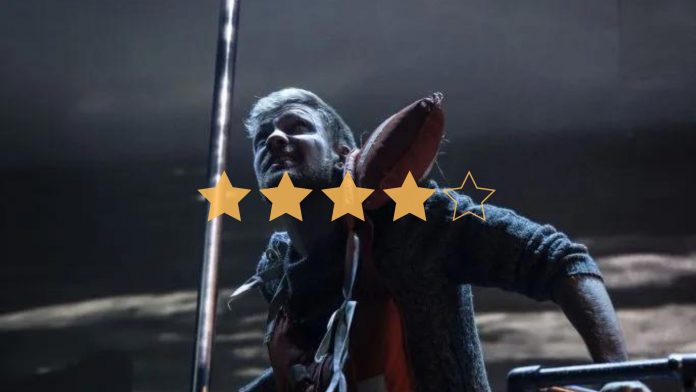★★★★✰
The Original Theatre Company’s production Into The Night is based on the book Penlee: The Loss of a Lifeboat by Michael Sagar-Fenton and adapted for the stage by Frazer Flintham. Recorded in December 2021 for the fortieth anniversary of the disaster, the show charts the story of the sixteen lives lost on 19 December, 1981 and the sacrifices made by the crew of the Solomon Browne lifeboat crew.
On a stormy night off the coast of Cornwall, the engines of the Union Star vessel failed in already-perilous conditions. As the ship drifted towards the coast it was coming close to the rocks at Boscawen Cove. No Union Star crew could be rescued by the dispatched rescue helicopter due to the violent winds and a dispatched tugboat was unable to tow the ship. The eight men aboard the Solomon Browne managed to save four of the eight Union Star crew, then decided to make a final rescue attempt—at which point they lost all radio contact with the shore.
The crew of both boats were not seen live again.
There is a memorial garden for the lost crew beside the original boathouse, and almost all of Mousehole’s Christmas lights—save for the cross and two angels – are turned dimmed on the disaster’s anniversary every year in remembrance. Remembrance is also the goal of Original Theatre Company’s production, hence the need for some additional context before this review.
The format of the play is particularly innovative—in many ways it’s only enhanced by the streaming medium, as it allows for smooth transitions between the show’s settings. The audience is taken from The Ship Inn, Mousehole, to the Union Star’s deck, to the lifeboat station and back again. The set, costume and lighting designers have clearly had to collaborate extremely closely to pull everything together—watching the show, one believes they are really looking at the inside of a helicopter, the deck of a lifeboat or a stormy sea.
The show is a blend of storytelling and acting reminiscent of shows such as Come From Away. Although well-narrated, particularly by Madeline Knight, this blend at times feels a little disjointed—it may be the clash of the past and present that does this. Actors will use photographs, diagrams and models to demonstrate what is wrong with the Union Star in a way that feels a little bit like a television presenter talking to you and it sometimes disrupts the immersive nature of the rest of the play.
One of the play’s greatest assets is Hazel Simmons—actor, songwriter and Cornish folk musician. She lends her musical talents to a variety of songs throughout the play, all of them goosebump-inducing. Also praiseworthy is sound designer Dominic Bilkey, who knows when to use silence just as much as when to use sound. Watching this show from home while safely indoors makes the howling wind and, most notably, the minutes of empty static when the Penlee lifeboat fails to respond, feel all the more heart-stopping.
Speaking of hearts, this show’s lies in the message that human beings inherently just want to help. Noted within the narration are the other three lifeboats wishing to assist the Solomon Browne, the villagers waiting eagerly for news, the lifeboat crew themselves who undertook such a great personal risk and were lost to it. The show gives its subjects their due and aid in their remembrance, especially for theatregoers who may not have known about the disaster before.
Some proceeds from the production go to the RNLI.
Words by Casey Langton.
Support The Indiependent
We’re trying to raise £200 a month to help cover our operational costs. This includes our ‘Writer of the Month’ awards, where we recognise the amazing work produced by our contributor team. If you’ve enjoyed reading our site, we’d really appreciate it if you could donate to The Indiependent. Whether you can give £1 or £10, you’d be making a huge difference to our small team.
